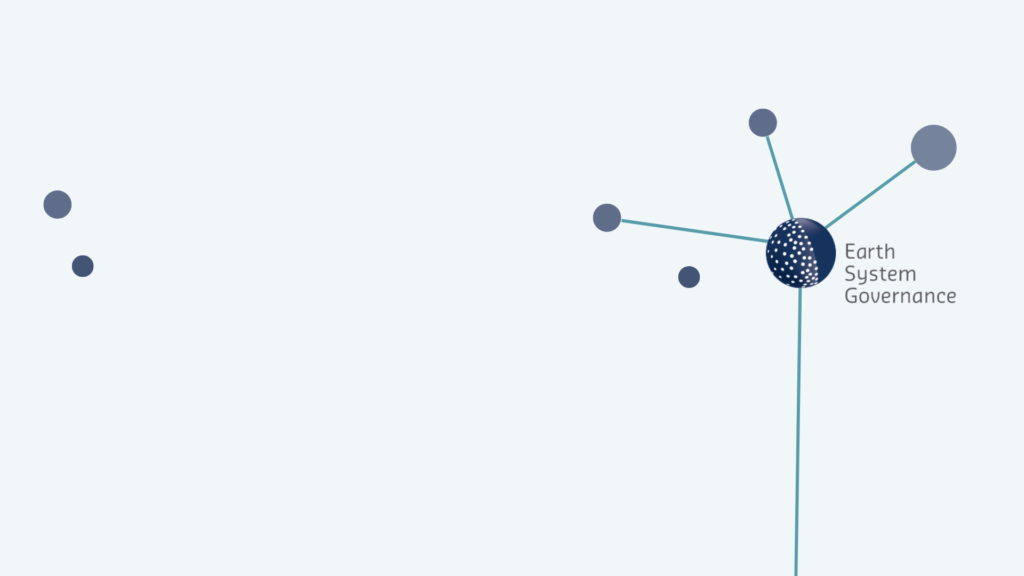Yves Zinngrebe, Ioannis Agapakis, Elsa Tsioumani, Sylvia Karlsson-Vinkhuyzen, Joanna Smallwood, Johannes Förster, Ulrike Tröger, Ina Lehmann, Vivian Valencia
The recently adopted Kunming-Montreal Global Biodiversity Framework (GBF) of the Convention on Biological Diversity (CBD) has been celebrated as a global achievement in the fight against biodiversity loss, but it has significant shortcomings. The negotiations were difficult, resulting in watered-down proposals and much text left in square brackets for ministers in the high-level segment to resolve at the end of COP 15. Some of the key areas of high-level negotiation were the target to designate 30% of land and oceans as protected areas, the creation of an international biodiversity fund, digital sequence information, and the implementation mechanism. After four year of tedious negotiations, the COP 15 process was slow and ineffective, leading to tensions and frustrations tainting the atmosphere of what was supposed to be a motivating starting point for another decade of biodiversity action. The GBF has made some advances, such as new targets on climate change adaptation, value chains, and equity, and requirements for large corporations and financial institutions to improve transparency on their impacts and dependencies on biodiversity. However, there are remaining issues such as disparate and imprecise targets, weak implementation mechanisms, and insufficient attention to the drivers of biodiversity loss. These will pose challenges for national government in their effort of developing their National Biodiversity Strategies and Action Plans (NBSAPs) to design targets and measures to implement the GBF.
In this blog, experts from the Earth System Governance Taskforce on Governance of Nature and Biodiversity who were present at the negotiations in Montreal last December highlight several key elements of the GBF that require attention. This includes emerging technologies and digital sequence information, indigenous participation, Rights of Nature and intrinsic values, the implementation and review mechanism, mainstreaming and resource mobilization. Each of these areas presents unique challenges and opportunities for the global community to address biodiversity loss in a meaningful way.
While the CBD (Convention on Biological Diversity) has been quick to respond to scientific and technological advances, the outcomes of COP 15 are mixed. On the one hand, negotiations on benefit-sharing from the use of digital sequence information (DSI) were successfully concluded, and a multilateral benefit-sharing mechanism was established. On the other hand, decisions related to biosafety are less ambitious, with a weak GBF target and limited guidance on risk assessment of gene drives. Tsioumani argues that continued CBD deliberations and guidance are vital, particularly for developing countries lacking assessment capacity, as biotechnologies progress at an extremely rapid pace with potential global impact.
The positive aspects of the GBF (Global Biodiversity Framework), particularly its recognition of the role and rights of indigenous peoples and local communities (IPLC). IPLC advocates were satisfied with the inclusion of target 3, which aims to conserve 30% of land and oceans globally by 2030 through protected areas and other conservation measures, while recognizing indigenous land rights and contributions to biodiversity conservation. However, some fear that the deal is still not strong enough to protect IPLC, as their territories were not established as a third type of area-based conservation. The GBF also includes language on access to traditional knowledge and protection of human rights defenders, but conservation standards for indigenous territories are only vaguely specified. The acknowledgement of traditional and local knowledge systems will require participatory planning processes to co-design and evaluate these criteria.
There is recognition of different value systems in the Global Biodiversity Framework (GBF) and the importance of an ecocentric perspective that acknowledges intrinsic values of nature. The recognition of Mother Earth and other Mother Earth centric actions in the GBF including ecocentric and rights-based approaches to facilitate the implementation of targets 16 (sustainable consumption) and 19 (increasing biodiversity finance) is a positive step towards confronting neoliberal ideologies of nature and implementing more relational values of nature. However, the GBF could have incorporated these perspectives in a more meaningful way and parties may still prioritize certain anthropocentric valuations of nature over others during implementation.
The post-2020 Global Biodiversity Framework (GBF) has made incremental improvements to planning, implementation, monitoring, reporting, and review mechanisms compared to the Aichi era. The standardization of national reports and the global biodiversity “stocktake” mechanism are positive developments, but the quality of evaluation will depend on the monitoring framework’s indicators and means of verification, which is still incomplete. The lack of an in-depth review process for all parties and the voluntary option for progressive stepping up of action may hinder substantial and timely course corrections. However, there is still room for future enhancements to the GBF through subsequent CoPs.
The adoption of the GBF requires parties to use National Biodiversity Strategies and Action Plans (NBSAPs) to translate newly agreed targets into national targets, and implement them with a planning, monitoring, reporting and review mechanism to guide and evaluate progress. Parties must report their national targets in a standardized format before COP16 and progress will be continuously evaluated and reviewed during COP16 and subsequent COPs. However, the quality of indicators and means of verification is uncertain, and the COP outcome does not commit to specific actions to address direct and indirect drivers of biodiversity loss. The GBF encourages parties to integrate biodiversity horizontally and vertically into all sectors and political levels, but no specific measure to push and evaluate mainstreaming has been adopted. The document calls for governments to encourage other actors in participatory processes to take ownership for implementation, with non-governmental actors invited to contribute voluntarily. The GBF is approved as guidance for national implementation, and a very soft evaluation process is installed. Specific and binding requirements will be needed in upcoming COPs to help, guide, or incentivize mainstreaming on the national level.
The Global Biodiversity Framework (GBF) sets a target of mobilizing at least US$ 200 billion per year by 2030, globally and from all sources, and closing the global biodiversity finance gap of US$ 700 billion per year by 2050. This represents a leap forward compared to the previous Aichi Targets, but there are concerns that the funding gap will only be closed in 2050, which could delay efforts to stop biodiversity decline. There are also concerns about the low level of biodiversity-related international financial resources for developing countries and the potential marketization of biodiversity through private funding and innovative financial schemes. The swift mobilization and transfer of funds will be key to enabling implementation of the GBF.
The success of Target 3, which aims to conserve 30% of land and oceans globally by the year 2030 through the establishment of protected areas and other area-based conservation measures, is linked to Target 10 on sustainable management of agriculture, aquaculture, and forestry. The long-term viability of protected areas largely depends on what occurs in adjacent agricultural areas, , and that agroecology is a key factor in achieving sustainable management of agriculture to support Target 3. The inclusion of the term agroecology in the final text of the GFB caused mixed responses, as it is seen as a way to promote sustainable and resilient food systems that support biodiversity, but it is also in contrast to the input-intensive, monocrop type of systems promoted by sustainable intensification.
Target 15 of the Global Biodiversity Framework (GBF) urges large corporations and financial institutions to assess their impacts and dependencies on biodiversity and integrate it into their reporting. Although the word “mandatory” didn’t make it into the final text, the language implies the need for policies that ensure companies regularly monitor and disclose their risks and impacts. This indicates particularly to large businesses that they must address biodiversity if they want to access certain markets. The challenge now is to ensure that this reporting requirement translates into meaningful information for decision-making and sustainable practices.
The GBF is approved – what comes next?
The next step after the adoption of the Kunming-Montreal Global Biodiversity Framework (GBF) is the national implementation by parties. Parties will have to specify their national targets and take steps to implement them. Meetings of various groups will work on finalizing indicators and prepare decisions towards stronger commitments for implementation. The NBSAP accelerator partnership and other initiatives offer potential to foster national efforts that could go beyond minimum compliance with vague GBF targets. Upcoming assessments by the Intergovernmental Platform on Biodiversity and Services (IPBES) can be important sources of information. While many issues were not resolved by COP15, parties now have the flexibility offered in the GBF for implementation to halt, protect and restore biodiversity for the benefits of humans and non-humans.










